5 Edible Cacti and Succulents You Can Grow Indoors
Prickly pear salad, anyone?
5 Edible Cacti and Succulents You Can Grow Indoors
Prickly pear salad, anyone?
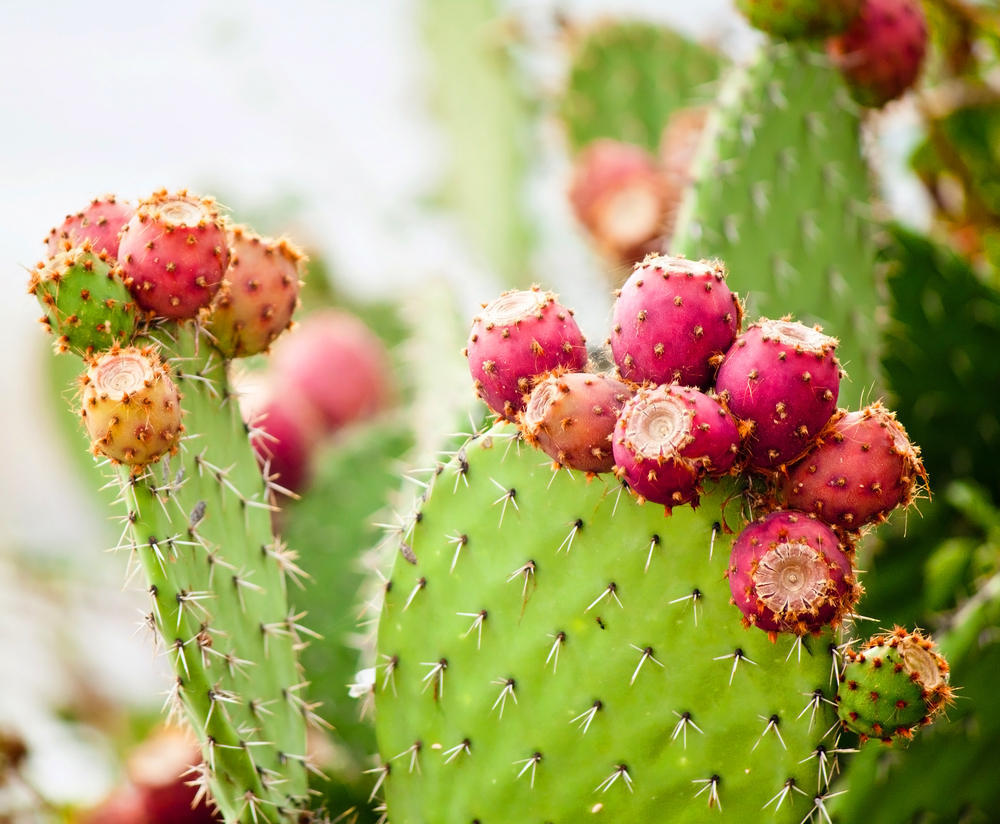
Prickly pear cactus is one edible alternative for your home-growing adventures. by fischers on Shutterstock
Starting an indoor garden is an obvious option for gardeners, unwilling to stop growing because of colder weather. But while harvesting your own garlic and lettuce off your windowsill can still be fulfilling, producing the same old fruits and vegetables indoors can get a little mundane.
If you’re looking to get a little more experimental, we’ve got you covered. Edible cacti and succulents are one alternative that can be particularly delicious. And most of them are pretty low maintenance. We’ve assembled a list of five with some tips for how to grow them inside your home.
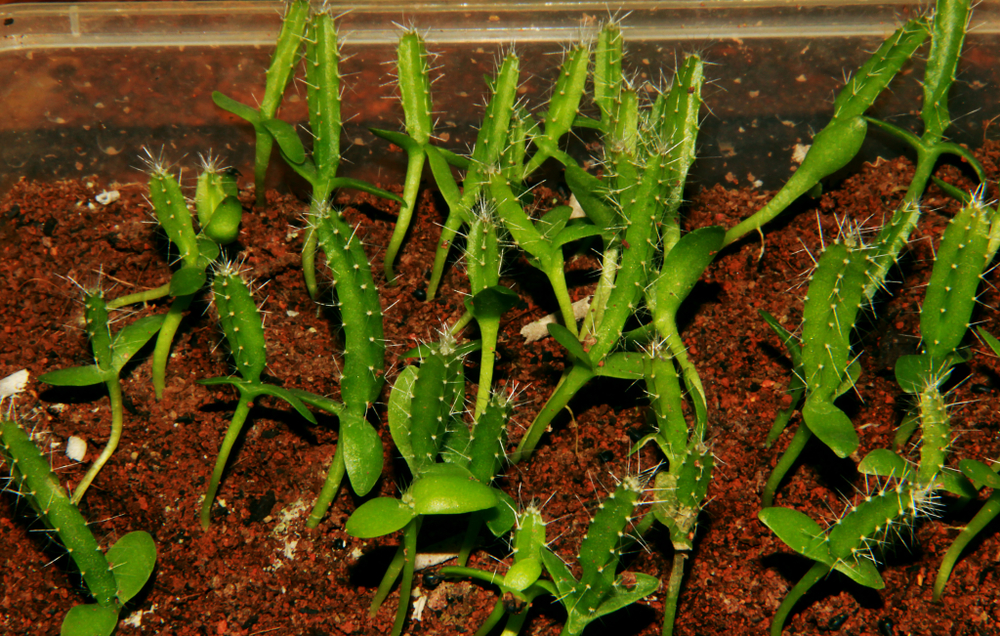
Dragon Fruit, Hylocereus undatus.
If you didn’t know this already, dragon fruit is part of the cactus family. This spiky fruit has a memorable crunchiness and tastes like a cross between a kiwi and a pear. They’re a great addition to smoothies or can be eaten on their own. Dragon fruit thrives in dry, warm environments. Ensure you place your own in a south facing window or a location that has access to sunlight for 6-8 hours a day. Water it about once a week. Your soil should feel dry each time you water it.
Depending on how long you want to wait before you have harvestable fruit, you can either grow this cactus from a seed or a cutting. Growing from a seed takes six years and growing from a cutting takes one.
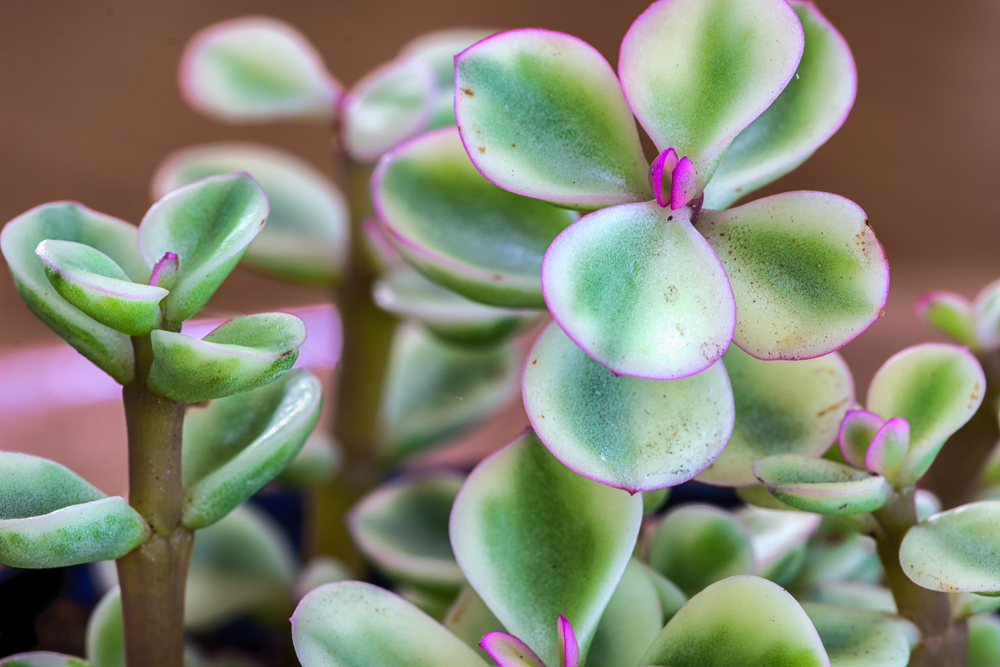
Elephant Bush, Portulacaria afra
The elephant bush, otherwise known as elephant food, is not just for elephants—you can eat it too! Strip the leaves off the stem and add to a salad. You can also cook them and add to soup. They’re crunchy in texture and have a sour taste.
These plants grow best in well-draining potting mix, cactus soil or potting soil that is 50 percent sand. This succulent prefers indirect sunlight. For indoors, a south-facing window is ideal. It’s important to be mindful that for this plant, too much sun can cook the leaves to a crisp and cause them to fall off. You would know if the elephant bush received too much sun if it starts to turn yellow or red at the tips. When you water the elephant bush, try to distribute the H2O directly into the soil and away from the leaves. Water that sits on top of the leaves for too long can make it susceptible to rotting.
We recommend using the soak and dry method, which means allowing the soil to dry up as a sign for when it’s time to give the plant some water. If your first inch of soil feels completely dry, it’s time for some water.
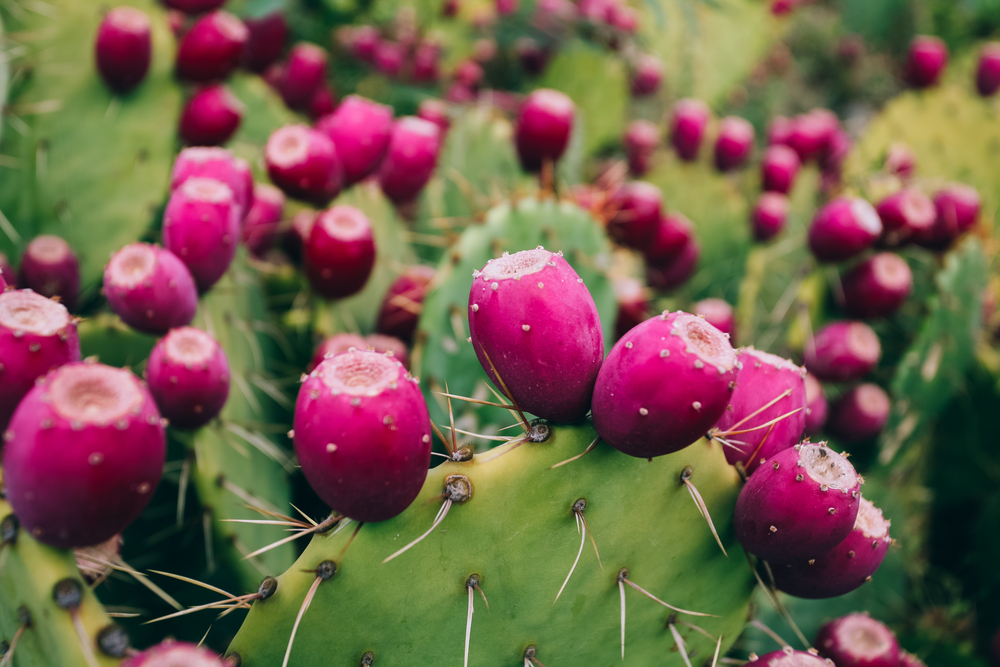
Prickly Pear, Opuntia ficus-indica
Prickly pear cactus is known for its ability to grow tasty, syrupy fruit. However, the petals are also a tasty snack that can be consumed on their own, added in salads or omelettes.
You can grow them in just about any type of container. It thrives in the sun and needs at least six hours of direct sunlight each day. Your west or south facing window will be best. It also needs well-draining soil, as soil that’s too damp for the prickly pear can cause it to rot. Water them every ten to 14 days or when its top half-inch to inch of soil in the pot has become dry.
This cactus is slower growing in its fruit production and can take three to four years before a baby plant starts growing fruit. So enjoy its petals for the time being.
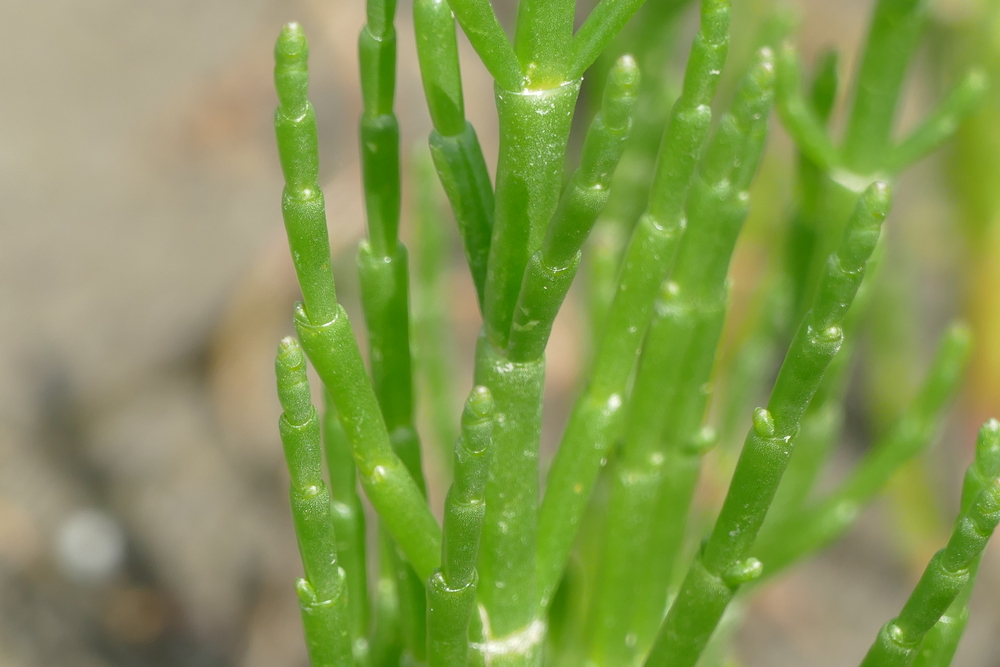
Glasswort, Salicornia europaea
Glasswort, sometimes called the poor man’s asparagus, is a succulent native to South Africa. Glasswort grows best in full sun. You can keep this succulent on your windowsill throughout the day. Ensure it is planted in sandy or soil with good drainage. This plant needs to be nurtured with salty water. For every two cups of water, add two teaspoons of sea salt and stir. Your soil should always be moist, so monitor this plant accordingly and ensure you are providing it with a steady supply of water.
Glasswort is edible and can be eaten raw in salads. Alternatively, it can be steamed, pickled or served in a stir fry. They are tastiest and ready to harvest when stems are around 5 inches long.
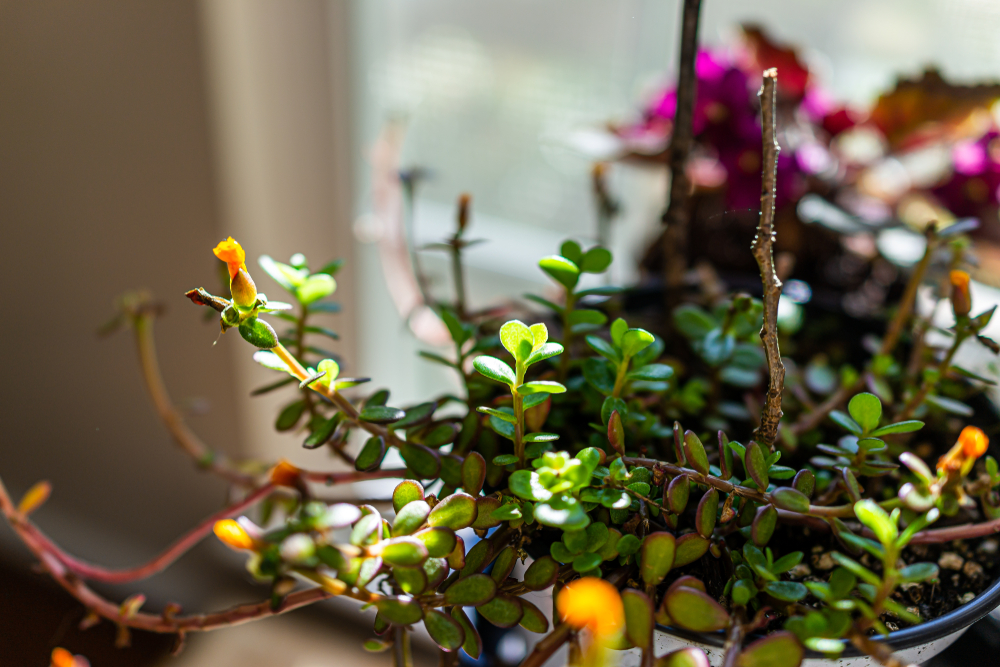
Purslane, Portulaca oleracea
Purslane is an annual succulent that is also commonly known as red root or pursley. It has seven times the beta-carotene of carrots and six times more vitamin E than spinach. Michael Pollan has described it as one of the most nutritious wild plants.
This low-maintenance, drought-tolerant plant grows best in full sun—about eight hours is best. It needs well-drained soil and needs to be watered about once a week or when the top layer or first inch of the soil has dried up. When you water this plant, it should never be to the point where your soil feels soggy.
Serve the plant’s leaves in dishes as you would with spinach or microgreens. Their leaves are tart and have a peppery aftertaste.
Follow us
This work is licensed under a Creative Commons Attribution-NoDerivatives 4.0 International License.
Want to republish a Modern Farmer story?
We are happy for Modern Farmer stories to be shared, and encourage you to republish our articles for your audience. When doing so, we ask that you follow these guidelines:
Please credit us and our writers
For the author byline, please use “Author Name, Modern Farmer.” At the top of our stories, if on the web, please include this text and link: “This story was originally published by Modern Farmer.”
Please make sure to include a link back to either our home page or the article URL.
At the bottom of the story, please include the following text:
“Modern Farmer is a nonprofit initiative dedicated to raising awareness and catalyzing action at the intersection of food, agriculture, and society. Read more at <link>Modern Farmer</link>.”
Use our widget
We’d like to be able to track our stories, so we ask that if you republish our content, you do so using our widget (located on the left hand side of the article). The HTML code has a built-in tracker that tells us the data and domain where the story was published, as well as view counts.
Check the image requirements
It’s your responsibility to confirm you're licensed to republish images in our articles. Some images, such as those from commercial providers, don't allow their images to be republished without permission or payment. Copyright terms are generally listed in the image caption and attribution. You are welcome to omit our images or substitute with your own. Charts and interactive graphics follow the same rules.
Don’t change too much. Or, ask us first.
Articles must be republished in their entirety. It’s okay to change references to time (“today” to “yesterday”) or location (“Iowa City, IA” to “here”). But please keep everything else the same.
If you feel strongly that a more material edit needs to be made, get in touch with us at [email protected]. We’re happy to discuss it with the original author, but we must have prior approval for changes before publication.
Special cases
Extracts. You may run the first few lines or paragraphs of the article and then say: “Read the full article at Modern Farmer” with a link back to the original article.
Quotes. You may quote authors provided you include a link back to the article URL.
Translations. These require writer approval. To inquire about translation of a Modern Farmer article, contact us at [email protected]
Signed consent / copyright release forms. These are not required, provided you are following these guidelines.
Print. Articles can be republished in print under these same rules, with the exception that you do not need to include the links.
Tag us
When sharing the story on social media, please tag us using the following: - Twitter (@ModFarm) - Facebook (@ModernFarmerMedia) - Instagram (@modfarm)
Use our content respectfully
Modern Farmer is a nonprofit and as such we share our content for free and in good faith in order to reach new audiences. Respectfully,
No selling ads against our stories. It’s okay to put our stories on pages with ads.
Don’t republish our material wholesale, or automatically; you need to select stories to be republished individually.
You have no rights to sell, license, syndicate, or otherwise represent yourself as the authorized owner of our material to any third parties. This means that you cannot actively publish or submit our work for syndication to third party platforms or apps like Apple News or Google News. We understand that publishers cannot fully control when certain third parties automatically summarize or crawl content from publishers’ own sites.
Keep in touch
We want to hear from you if you love Modern Farmer content, have a collaboration idea, or anything else to share. As a nonprofit outlet, we work in service of our community and are always open to comments, feedback, and ideas. Contact us at [email protected].by Lindsay Campbell, Modern Farmer
October 4, 2020
Modern Farmer Weekly
Solutions Hub
Innovations, ideas and inspiration. Actionable solutions for a resilient food system.
ExploreExplore other topics
Share With Us
We want to hear from Modern Farmer readers who have thoughtful commentary, actionable solutions, or helpful ideas to share.
SubmitNecessary cookies are absolutely essential for the website to function properly. This category only includes cookies that ensures basic functionalities and security features of the website. These cookies do not store any personal information.
Any cookies that may not be particularly necessary for the website to function and are used specifically to collect user personal data via analytics, ads, other embedded contents are termed as non-necessary cookies.
Those were two cacti, and the rest, succulents. I will be posting on the farmers market website of the arizona community farmers market website (arizonacommunityfarmersgroup) the nutritional, cultural, and other information for 15 local arizona cactus fruit, as well as recipes.
Mark Lewis, Chmachyakyakya Kurikuri ‘Atatchkwivok’nytar
crater@comcast.net